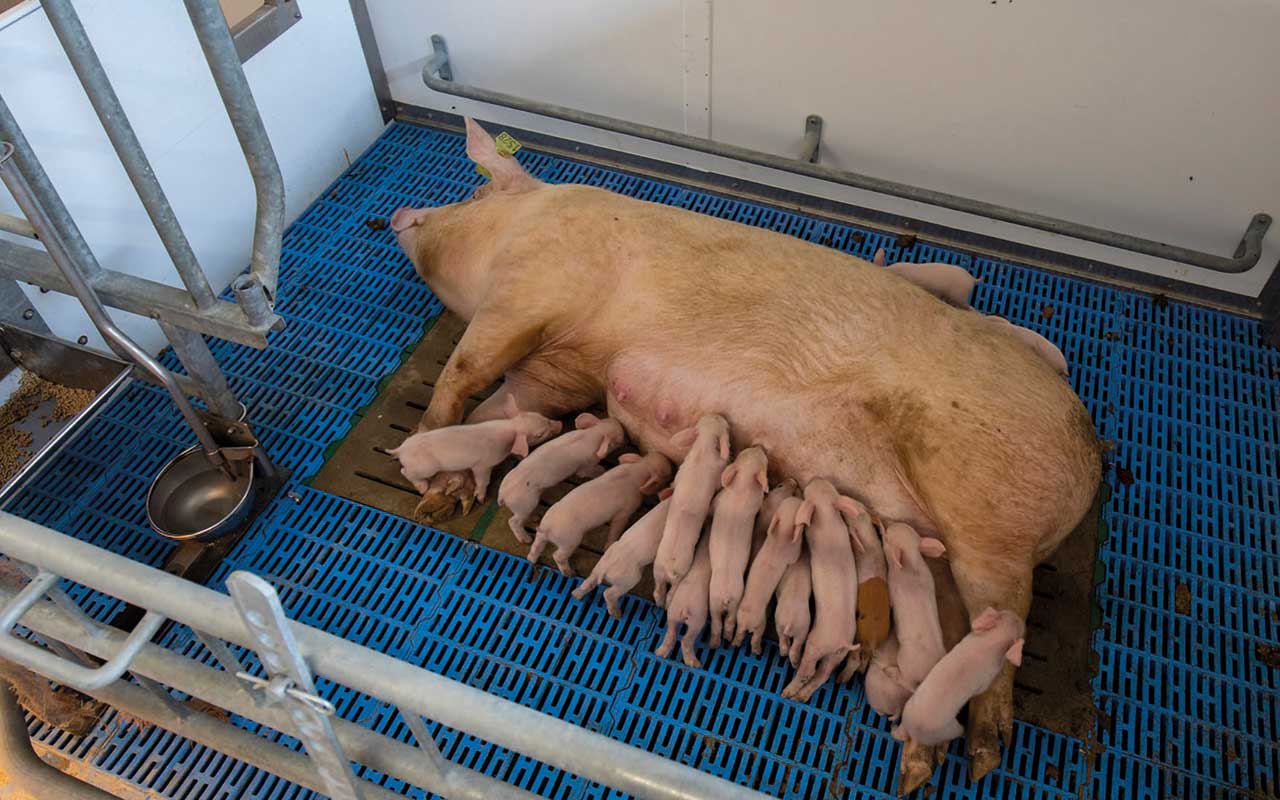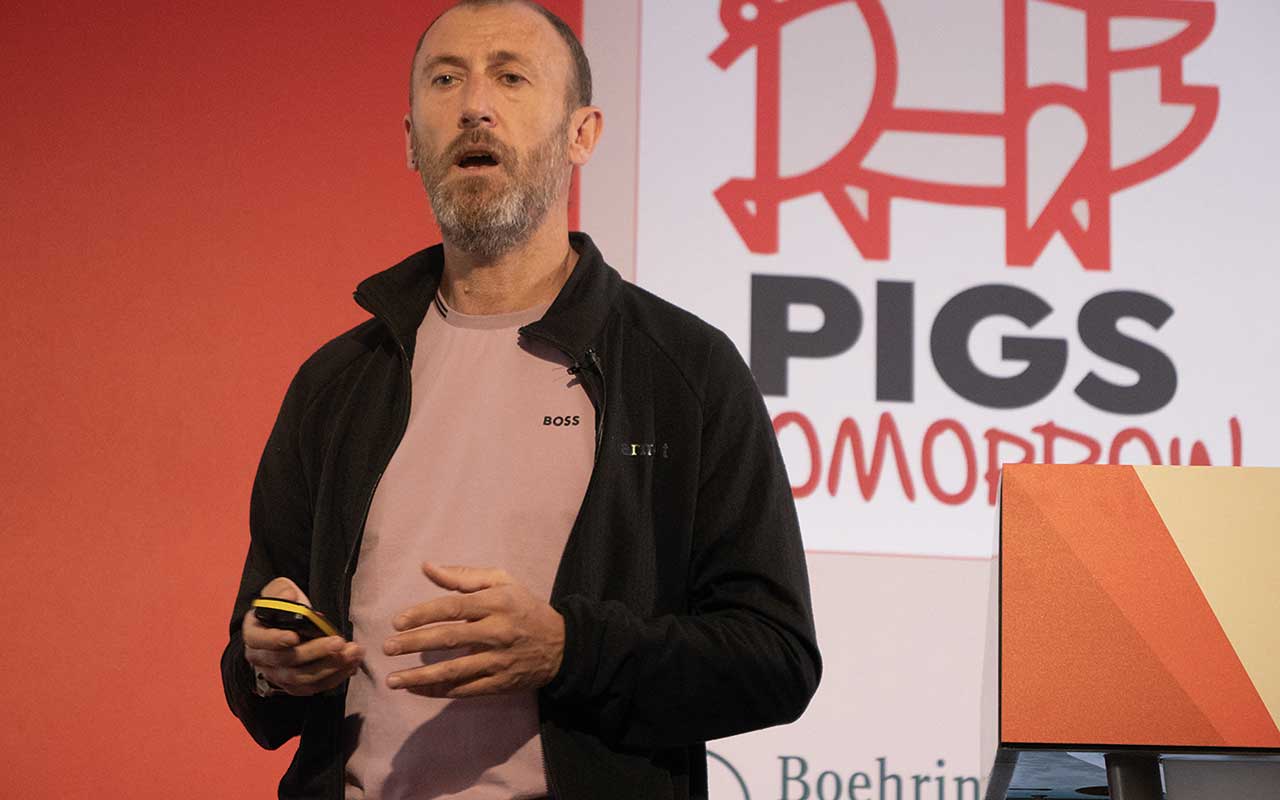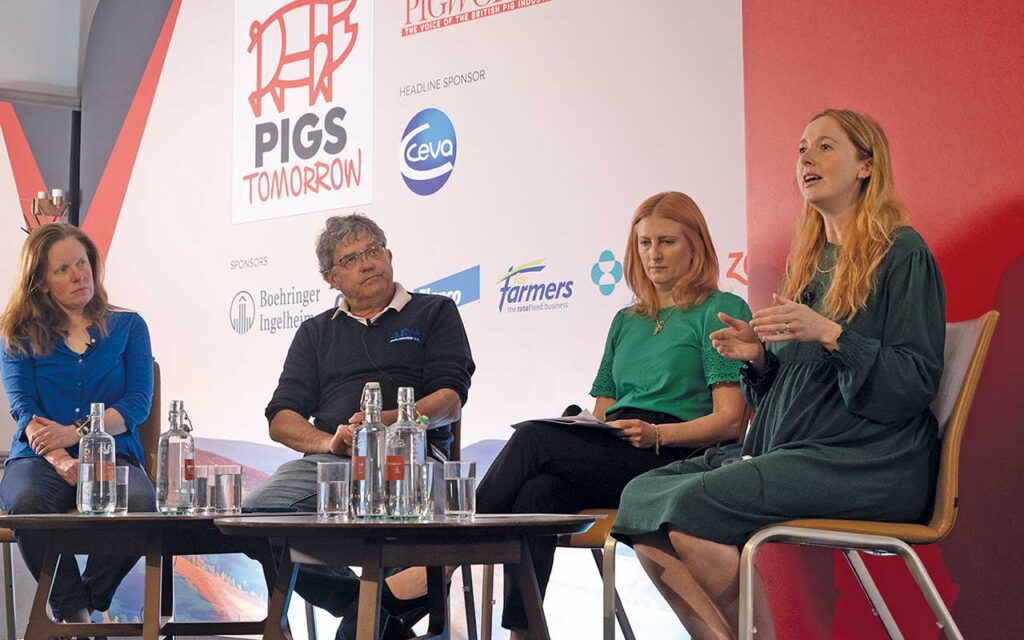First-hand knowledge and experience of what is happening on the ground, scientific research and updates from the NPA and Red Tractor were all combined at May’s Pigs Tomorrow conference in a valuable discussion on the future of farrowing systems.
The industry, as outlined in a position paper published by the NPA last year, has proposed a voluntary, industry-led transition away from conventional farrowing systems.
This includes a commitment that no new conventional crates will be installed, while there is general agreement that flexible farrowing, rather than completely free farrowing, is the best way forward.
Out of 60,000 farrowing sow places indoors in the UK, about 5,000 are currently flexible systems.
ARM Buildings pig environment specialist Tim Miller explained that flexible farrowing pens provide the ability to restrain the sow temporarily during farrowing to protect her piglets or while routine management tasks are done to help ensure stockperson safety.
“System design and their management is a constant learning curve, continually developing,” he said.
Two further necessary features that have been identified are a designated creep area for piglets and a free area/turning circle for the sow.
The typical footprint of conventional crates is 4.32sq m and the majority of flexible farrowing pens are commonly 6.24-6.5sq m, although they range between 5.5sq m and 7sq m.
“So, where a farrowing room may have held 60 sows before, the move to a flexible system means only about 48 sows would fit in the same room,” Mr Miller said.

He emphasised that the figures for pen footprint represent the total footprint, not the free area for the sow, which is typically nearer 4.8sq m, depending on the geometry of different system designs and how the pen opens up to release the sow.
“Rather than be specific about the total footprint, perhaps we should focus on the quality of the free sow area and creep area the system offers,” said Mr Miller, adding that bigger is not always better, as piglets can wander away from the sow and get cold.
Many management methods have been tried on different farms, with sows often closed in for farrowing, before opening the pen up again after two to five days.
“Once they are confident, many producers leave the pens open for gilts and second-parity sows throughout farrowing and only shut in older sows, but all say they want to keep the option to close them in,” Mr Miller said.
“The key message for me is that all farrowing house staff say they wouldn’t go back to conventional systems.”
Average piglet mortality across flexible systems in the UK is comparable with that in conventional crates, while sows are calmer and fitter, and walk easily out of the pen at weaning, he explained.
Farrowing priorities under focus

Prolific sows and their litters need close attention at farrowing time to minimise stress and optimise health and performance, said Pig 333’s Javier Lorente, on behalf of Ceva, sharing his experience on Spanish farms.
“It is always worth a review of both sow and piglet management during the first few crucial hours,” he said.
Mr Lorente emphasised the importance of providing feed with a high fibre content for sows before farrowing.
“They need energy for farrowing and, if they feed in the last three hours before farrowing, they are more likely to have a shorter farrowing duration and less likely to have constipation,” he explained.
After four hours of farrowing, the risk of stillborns increases. Stockpeople should try to focus farrowing attendance mainly on the middle and last parts of the farrowing period, as this is when most stillborns tend to occur.
A good water system that delivers good-quality, cool water is also important to ensure sows drink enough, especially in high summer temperatures of up to 40°C. For piglets, the two equal priorities are temperature and colostrum intake.
“We know about the importance of colostrum, but without warmth, piglets may not be able to take in enough colostrum. In the first few minutes, dry the first five or six piglets born, mark them and keep them warm until your next visit,” Mr Lorente suggested.
“After about 30 minutes, these marked piglets can be moved out to get their colostrum and the next piglets born can be put in to warm. Come up with a process and follow it consistently.”
Global picture and the latest science
Emma Baxter, associate professor at SRUC, is working with colleagues, globally, on establishing the evidence to answer the remaining questions on optimal farrowing systems.
The EU has committed to banning farrowing crates, although the timescales are uncertain, and some countries have already brought in regulations or plan to.
Sweden, Switzerland and Norway have banned conventional crates and now only permit fully free farrowing systems.
Denmark, Finland, Austria, Germany and New Zealand have pledged to phase out conventional farrowing, with all planning to allow temporary confinement/flexible systems.
There are various specifications for future requirements – for example, Germany has specified a total sow confinement period of five days, backed by evidence, while Denmark has said it should be from one day before farrowing to four days after.
Prof Baxter’s research has found that sows should be unconfined when they first move in, to enable nest building and help with farrowing duration and constipation.
“It’s important to give sows this time,” she said. “Tight turnaround times are not good in the long term, although I understand the pressures on farm.”
Research shows that the closer moving in was to the farrowing due date, the higher the risk of piglet mortality. Sows should ideally move in at least three days before their due date, she added.
Space is another factor often asked about and Prof Baxter explained why it would not work to just open up existing conventional crates.
“Modern sows are 50% heavier than in the 1980s, so they have become too big for older systems. We also know that turning is a natural and maternal behaviour that allows sows to gather their piglets before lying down. Sows need enough space to avoid them, for piglet welfare,” she said.
Where countries have specified a total pen footprint in planned regulations, they have generally gone for 6.5sq m, Prof Baxter said.
She felt this would be a suitable, future-proofed figure, but emphasised the latest research on the free sow area and the importance of ‘dynamic space’, which she and her colleagues are aiming to publish open access.
“We wanted to find out whether sows need their full body length to turn unhindered, and we found they don’t,” said Prof Baxter. “The minimum space length needed is 1.6m, the best is 1.8m or more, while 1.2m is too tight.”
She added, however, that quality of space could possibly be more important than quantity of space, within reason. Deciding on future systems is complex and multifaceted, and the details will matter.
The way ahead for the UK
Georgina McDowell, Red Tractor’s technical manager for pigs, said the assurance body could play a role in supporting the transition to flexible farrowing, having helped with other voluntary initiatives in the past, for example making collecting eMB antibiotic data part of the assurance standard.
She outlined how this possibility is part of the current consultation on Red Tractor’s tiered welfare proposals.
During a panel discussion, NPA chief executive Lizzie Wilson said the UK pig industry is in as good a position as possible when it comes to potential future UK legislation, with considerable alignment among all stakeholders on the voluntary approach to the transition.
However, great uncertainty remains, which is holding back investment, and it seems impossible to get a meeting with a minister at the moment.
“Defra has asked its welfare team to look at farrowing options for consultation, but it won’t be before the summer recess,” Mrs Wilson said. “They are extremely well informed – we’ve made sure of it. They have all the data and information provided by NPA, AHDB and the Building Suppliers Forum.
“We think alternative farrowing systems will be part of the government’s planned Animal Health and Welfare strategy, based on discussions at the recent ministerial welfare roundtable.
“They have said they need to work with the sector, with Defra minister Baroness Hayman acknowledging that we don’t want a repeat of the 1999 sow stall ban.
“All the retailers have also been receptive to our position statement on flexible farrowing, as have the RSPCA and even Compassion in World Farming,” Mrs Wilson said.
She added the NPA would continue to lobby hard to ensure early adopters of flexible farrowing systems are not penalised if they don’t meet future requirements – for example, on size and space.




